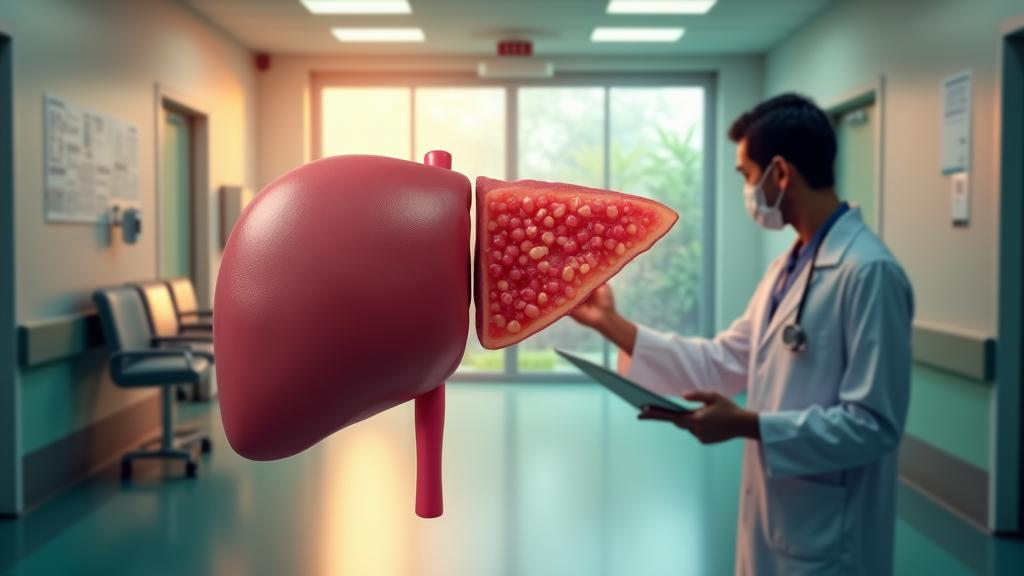Liver cirrhosis is a significant global health concern, affecting millions of people worldwide. This chronic condition results from long-term damage to the liver, leading to scarring and impaired function. Addressing cirrhosis requires a multifaceted approach that includes lifestyle changes and medical interventions. Understanding liver cirrhosis signs and seeking early intervention can lead to better outcomes for affected individuals. By recognizing the early symptoms of liver cirrhosis, people can take proactive steps in the treatment journey.
Recognizing Liver Cirrhosis and Early Intervention
Liver cirrhosis occurs when healthy liver tissue is replaced with scarred tissue over time. This often results from alcohol consumption, hepatitis infections, or conditions like obesity. Recognizing the early symptoms of liver cirrhosis is crucial. These symptoms might include fatigue, itching, easy bruising, and swelling in the legs. Identifying these signs early can significantly impact successful intervention.
Regular check-ups and screenings play a key role in liver cirrhosis prevention. Catching the disease in its early stages stops it from getting worse.
For everyone, especially those at risk, lifestyle changes are important. Here’s what can help:
- Balanced diet: Opt for a low-fat and low-sodium diet plan for liver cirrhosis.
- Exercise: Regular physical activities like walking or swimming.
- Avoid alcohol: If the liver is compromised, avoiding alcohol can prevent further damage.
By incorporating these habits, people can delay or even avoid the progression of liver issues.
Comprehensive Management: Lifestyle Changes and Treating Underlying Causes
Managing liver cirrhosis involves both lifestyle changes and treating root causes. Key lifestyle modifications include abstaining from alcohol, following a balanced diet plan, and engaging in physical activity.
Important Lifestyle Changes:
1. Stop alcohol consumption: Alcohol significantly worsens liver conditions. 2. Healthy eating: Adopt a diet plan for liver cirrhosis rich in fruits, vegetables, and lean protein. 3. Regular exercise: Beyond helping with weight management, exercise supports liver health.
It’s also crucial to treat what caused the liver issue initially. For instance:
- Viral hepatitis: Use medicines to manage infections.
- Metabolic issues: Conditions like metabolic-associated steatohepatitis can improve with both medication and lifestyle changes.
Working with healthcare professionals can help manage liver cirrhosis complications and allow tailored liver cirrhosis treatment options. This comprehensive management ensures that every aspect of the disease is addressed, improving overall health.
Innovations in Medical Treatments and the Future of Cirrhosis Care
Recent advancements are reshaping the approach to liver issues. Non-invasive diagnostic tools, for instance, are enhancing liver cirrhosis diagnosis efficiency. These tools lower reliance on invasive procedures like biopsies, benefiting patients through less discomfort and easier access.
In terms of liver cirrhosis treatment options, there are significant breakthroughs:
- Antifibrotic drugs: These drugs work to reduce and prevent scarring in the liver.
- Regenerative medicine: This field, focusing on repairing damaged liver tissue, holds promise for future recovery options.
As we move forward, personalized medicine is becoming a key player in understanding and treating liver cirrhosis. This approach ensures therapies are tailored to each individual’s genetic makeup, lifestyle, and specific needs.
Technology advancements are enhancing patient outcomes. Wearable devices and apps are increasing health monitoring, making early detections easier and more frequent, reducing the onset of complications. These technological aids assist both patients and healthcare providers in managing and adapting latest liver cirrhosis treatments.
In summary, liver cirrhosis treatment options are continuously evolving, combining traditional methods with cutting-edge technology. A blend of lifestyle changes, targeted therapies, and medical innovations offers great hope for those affected by cirrhosis, paving the way towards more efficient, effective care and hopefully, a better quality of life for all involved.

